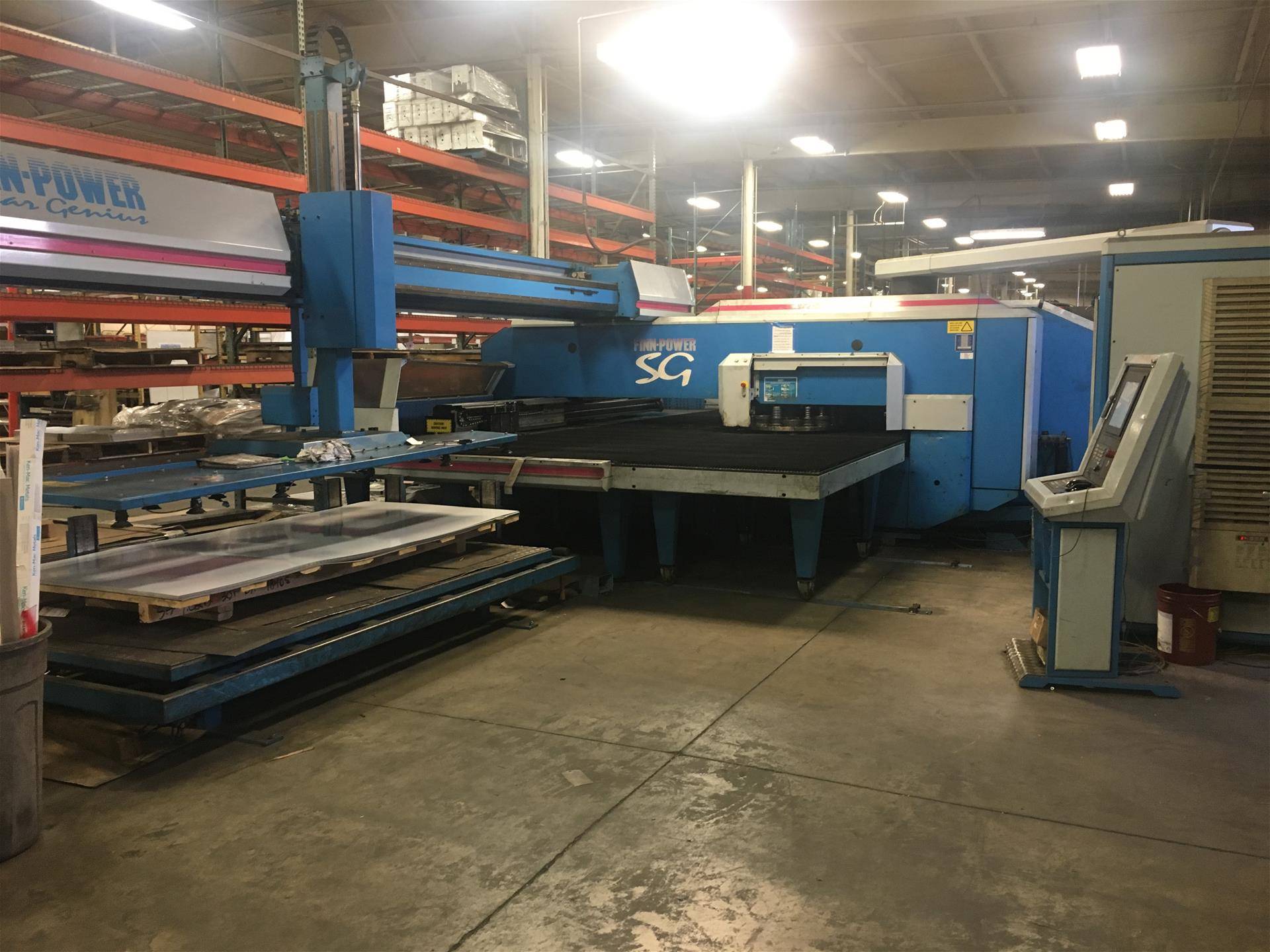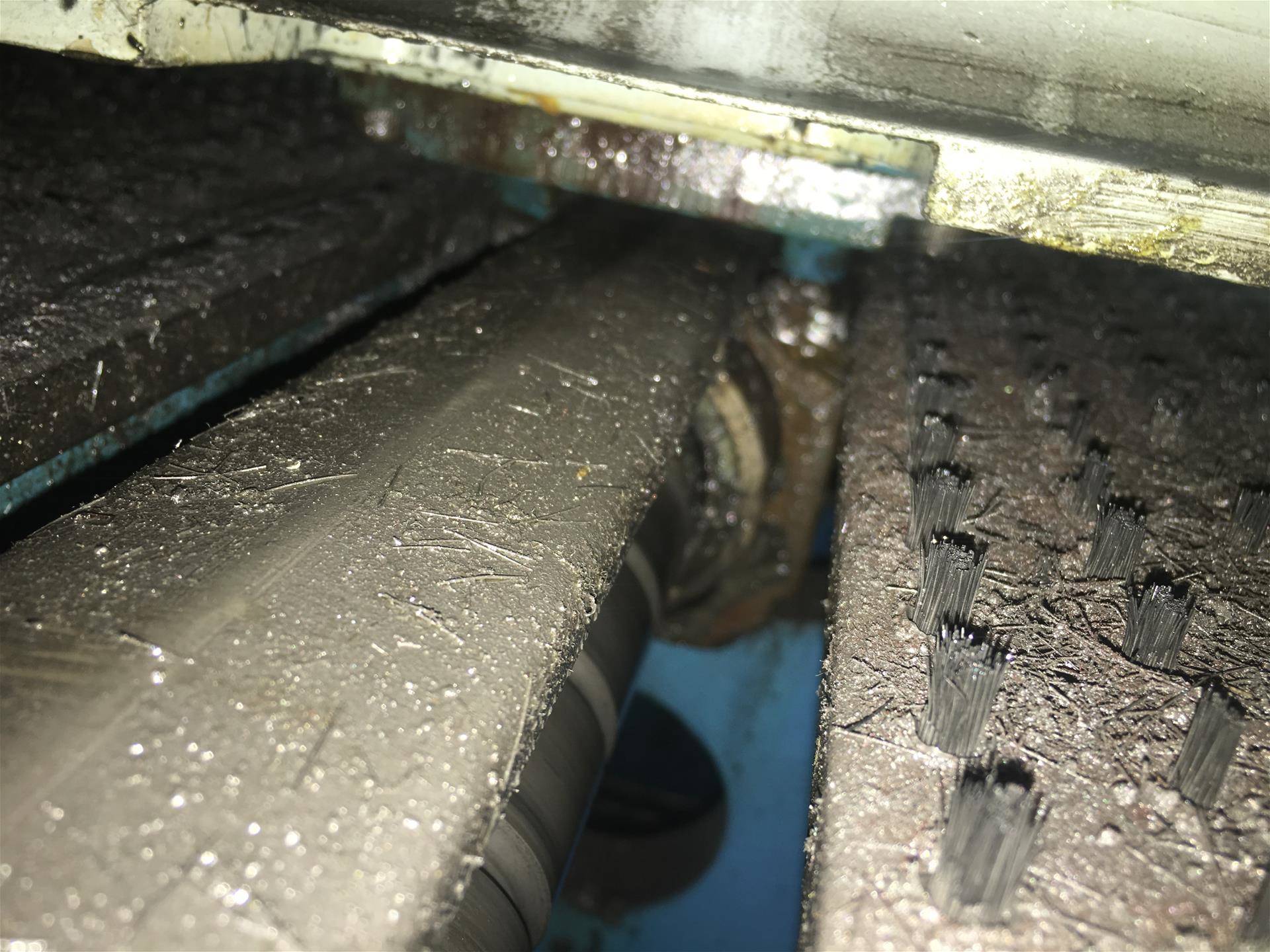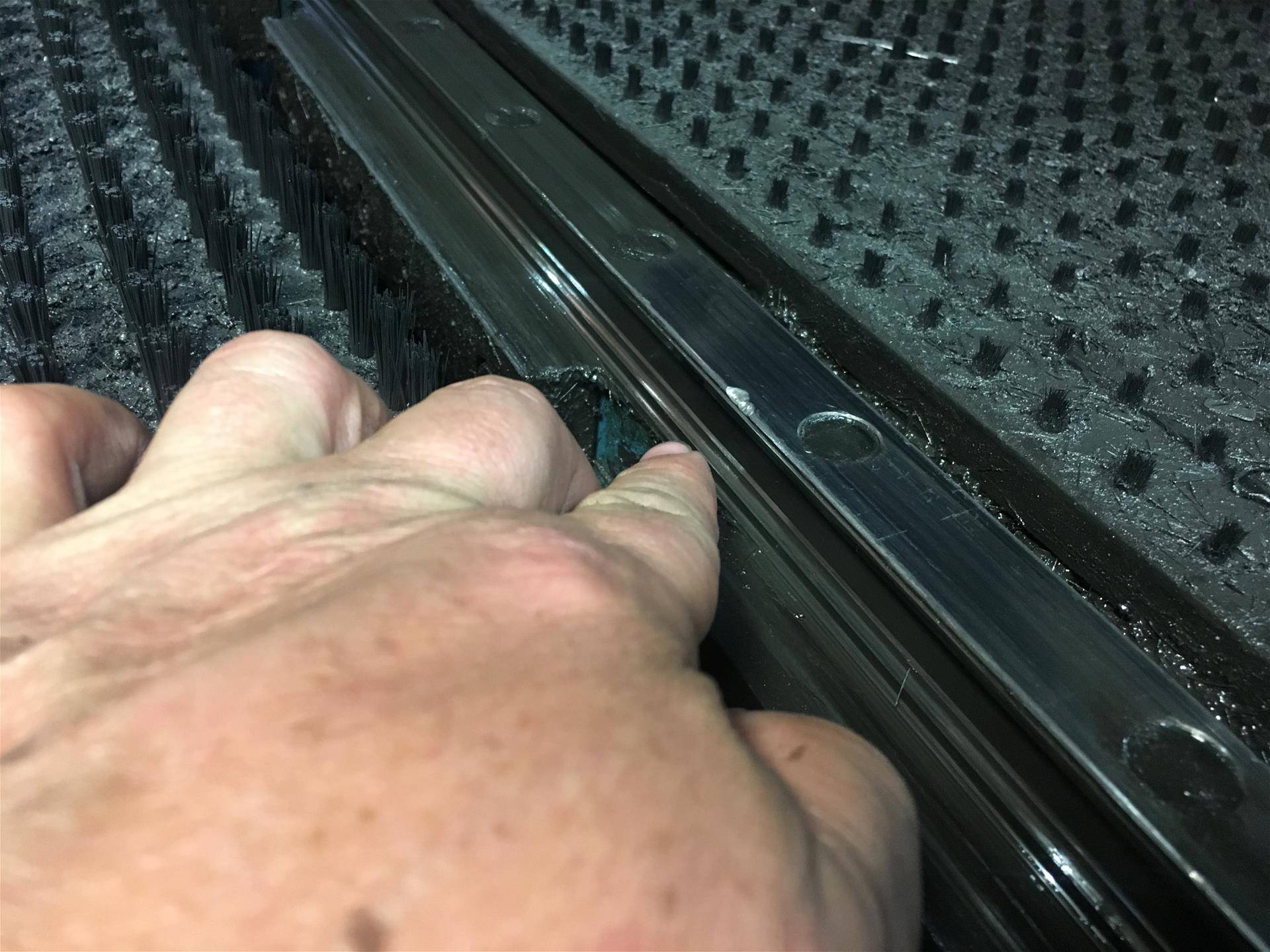Finn Power Turret Punch

Servicing a Finn Power Turret Punch is like having to polish and buff a stainless steel porcupine. It's going to prick and poke you the entire time. The technicians at Ballscrew Guys have done quite a few of these Turret Punches. Some models, especially the types with the dual Y-Axis ball screws under the work table, are not terribly difficult. Others, like the SG TRS 6 SU shown, have a buried Y-Axis Ball Screw which requires some surgery to get access to.

The Y-Axis of this turret Punch slides back and forth on two Linear Way Guide Rails located fairly close to the Y-Axis ball screw. The Ball Screw is protected by a steel bar. But the Y-Axis rails are totally exposed. These are often gouged and nicked. The Linear Way Guide slide blocks often are damaged, because they are kept running across the linear rail after the gouge has been taken from the bearing track. Most of the Finn Power Turret Punch machines similar to this TRS-6-SU with high operating hours have damaged Y-Axis rails in some capacity. In addition to causing the entire Axis to stutter when making a transverse across the rail damage, the bearings inside the slide blocks become worn. If you notice that your punched holes are out of square, or if your Finn Power has the Shear Genius capacity on it and shears off trapezoids, you probably need Y-Axis Linear Way Guide service along with your ball screw being rebuilt.

On the Finn Power TRS-6 series of machines, the entire sheet movement and X-Axis is moved by a single ball screw buried underneath a single metal protective cover. If you look in this image, you can see the mixture of grease, oil and debris combined with strands of the material suspension brushes Finn Power uses instead of material rollers. This Ball Screw is going to be packed full of these materials. They need to be cleaned out and have the bearings inside periodically replaced. Not simply just for accuracy, but for simple function. Later Finn Power Punches switched to a Dual/Twin Y-Axis ballscrew system. These screws are located under the material table.

Main weakness of this design of Finn Power Turret Punch is the two Linear Way Guide Rails along either side of the Y-Axis ball screw. These rails are exposed without covers. When the punched or sheared sheet moves across these, it should clear the rail by the material brushes. But it only takes one hanging piece of steel drop to slide across one of these rails to cause major damage. In this image, one of the gouges from such an accident is clearly visible. For temporary repairs to keep you machine in production until new Linear Way Guide rails can arrive, this type of damage can sometimes be filed and smoothed out. But such a repair is by no means a fix to your damaged components. In time, the bearings inside the Linear Way Guide block sliders will wear. Because of the close position of these two guide rails and the ball screw, any linear way guide looseness will turn to out of square issues when handling your sheet material and the Shear Genius shear system.
